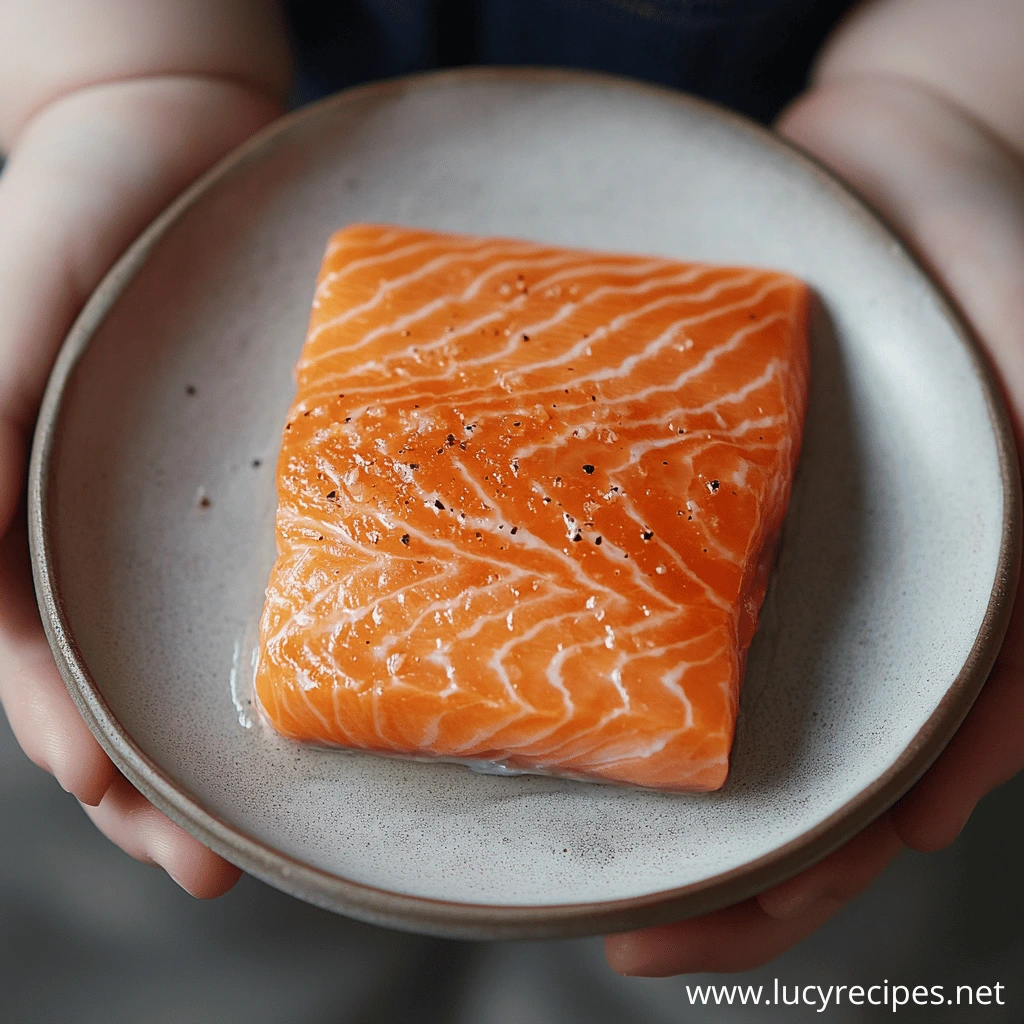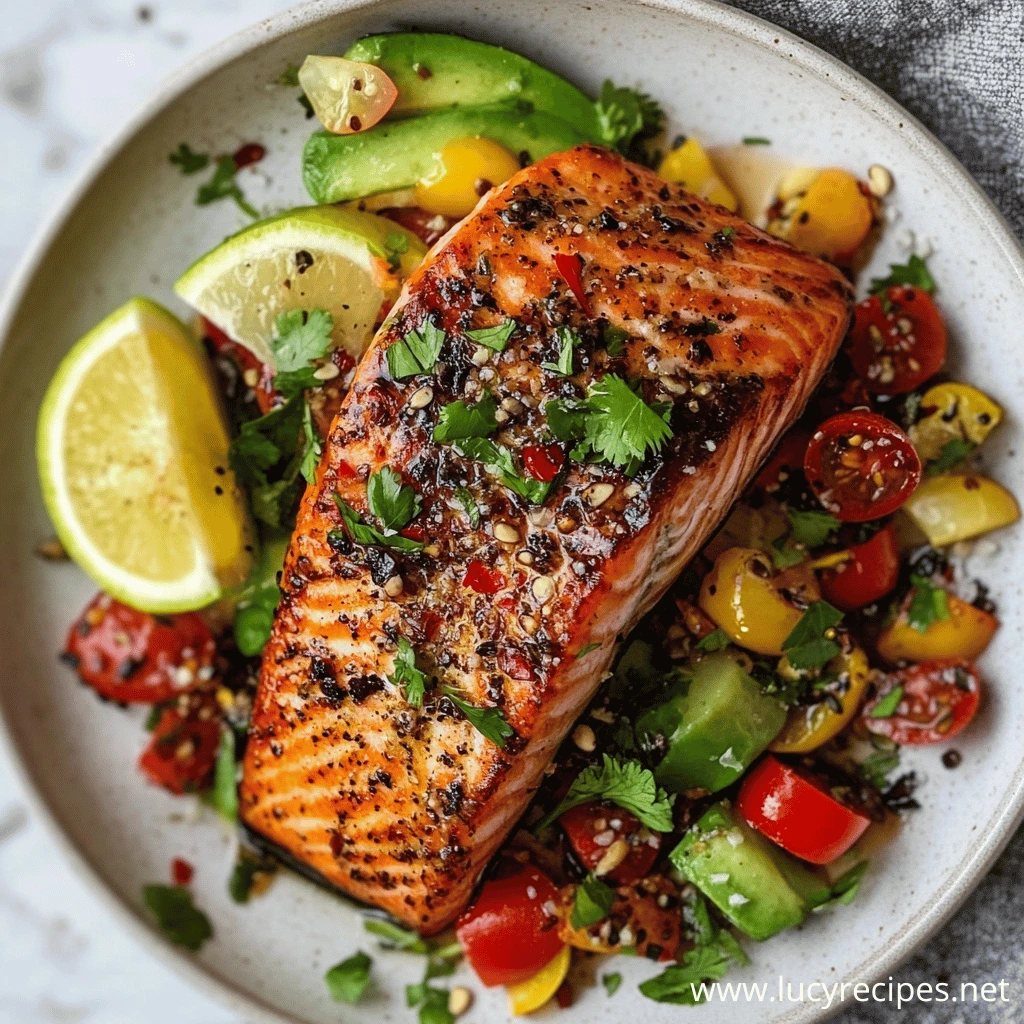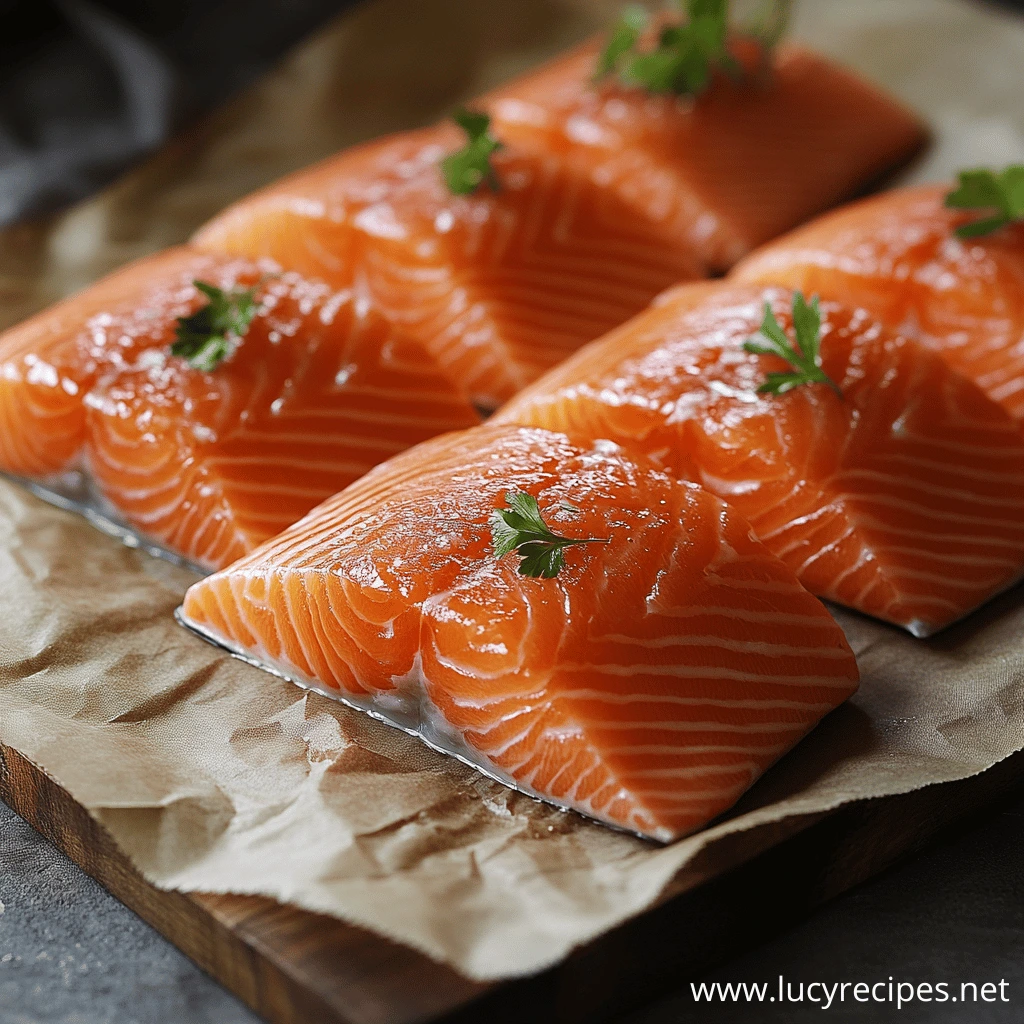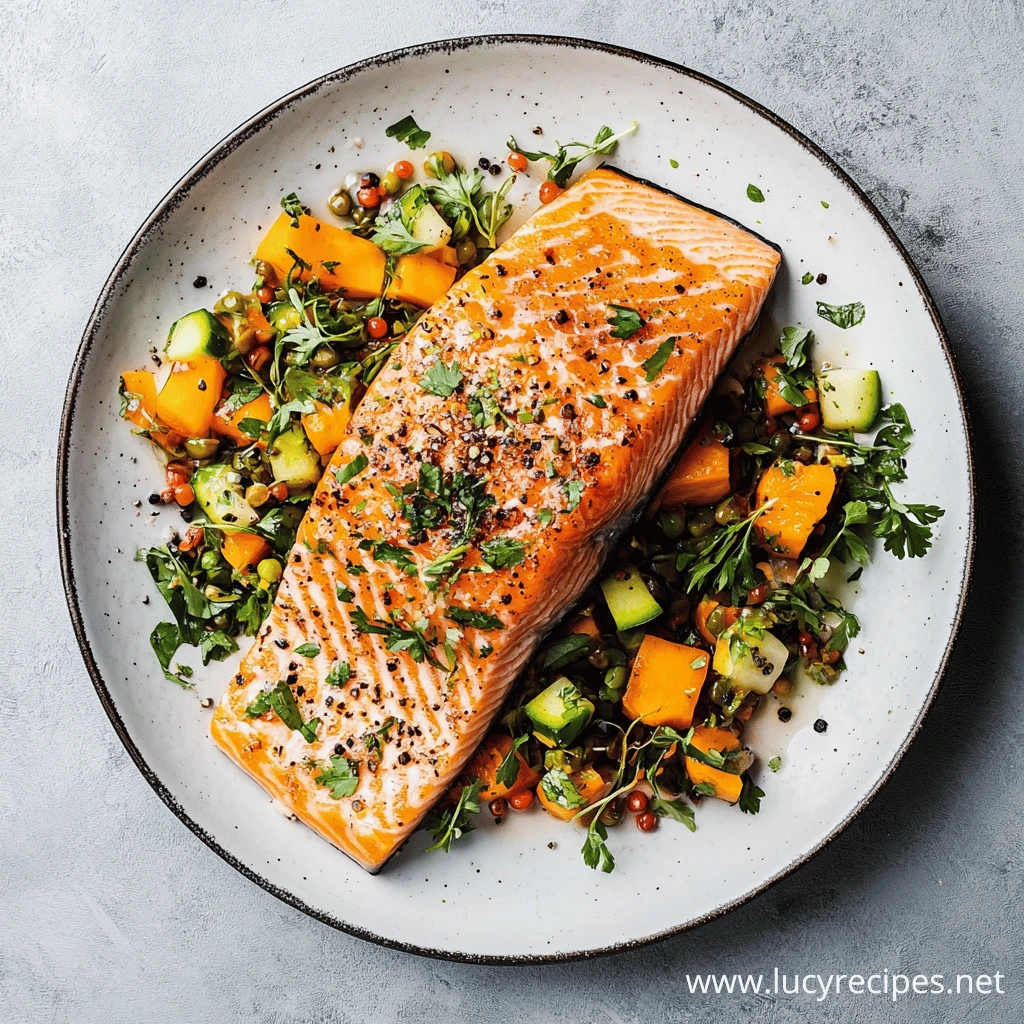Introduction
Salmon is one of the most popular fish consumed worldwide, prized for its rich flavor and health benefits. However, a common question that often arises is: Do you eat salmon skin? Many people discard the skin, unaware of its potential nutritional value and culinary versatility. In this article, we will explore everything you need to know about salmon skin, including its health benefits, risks, cooking methods, and more. Whether you are a salmon enthusiast or simply curious, this guide will help you make an informed decision.
Table of Contents
What Is Salmon Skin?
Salmon skin is the outer layer that protects the fish during its life. It acts as a barrier, shielding the flesh from environmental damage and helping to retain moisture. The skin is thick, rich in fat, and covered in tiny scales, which are typically removed before cooking.
Key Characteristics:
- High-fat content makes it flavorful and crispy when cooked.
- Contains omega-3 fatty acids, essential for brain and heart health.
- Often used in various cuisines for its unique texture and taste.
Understanding the composition of salmon skin helps us appreciate its culinary and nutritional value.
Learn how to prepare flavorful dishes with foil-grilled salmon for an easy and healthy meal.
Is Salmon Skin Edible?
The short answer is yes, salmon skin is edible. It is not only safe to eat but also offers a unique texture and flavor that enhances many dishes. The real question is: Do you eat salmon skin to enjoy its full benefits?
Why People Eat Salmon Skin:
- Flavor: When cooked properly, it becomes crispy and savory.
- Texture: Adds a contrasting crunch to soft salmon flesh.
- Nutritional value: Packed with vitamins and minerals.
However, the edibility of salmon skin depends on its preparation and the source of the fish. Choosing high-quality salmon is essential to avoid potential contaminants. To further elevate your cooking, check out tips for flipping salmon on the grill to ensure even cooking and a perfect finish.
Nutritional Value of Salmon Skin
Salmon skin is a powerhouse of nutrients, often overshadowed by the flesh. Including it in your diet can be beneficial in many ways.
Nutrients Found in Salmon Skin:
- Omega-3 fatty acids: Promote heart health and reduce inflammation.
- Vitamin D: Supports bone health and immune function.
- Protein: Essential for muscle repair and growth.
- Selenium: Acts as an antioxidant to protect against cellular damage.
- B Vitamins: Aid in energy production and brain function.
Eating salmon skin ensures you don’t miss out on these important nutrients. For health-conscious individuals, this can be a game-changer.
Compare the benefits of salmon skin to those of other fish dishes, such as the perfect bread stuffing for turkey breast.
Comparison to Flesh:
While salmon flesh contains similar nutrients, the concentration of certain compounds like omega-3 fatty acids and vitamin D is often higher in the skin. Eating both ensures you get the maximum nutritional benefit.
Health Benefits of Eating Salmon Skin

Incorporating salmon skin into your diet can provide numerous health benefits, thanks to its dense nutrient profile.
Key Benefits:
- Heart Health: The omega-3 fatty acids in salmon skin lower bad cholesterol and reduce the risk of heart disease.
- Brain Function: Regular consumption may improve memory and cognitive abilities.
- Skin and Hair Health: The healthy fats and vitamins nourish your skin and promote hair growth.
- Weight Management: High protein content helps in feeling full, reducing overall calorie intake.
- Bone Health: Vitamin D in salmon skin supports strong bones.
Additional Advantages:
- Anti-inflammatory Effects: Omega-3s help reduce inflammation, beneficial for conditions like arthritis.
- Energy Boost: High-quality protein and B vitamins provide sustained energy throughout the day.
Including salmon skin in your meals is not just delicious but also a health-conscious choice.
Risks Associated with Eating Salmon Skin
While salmon skin is generally safe, there are some risks to be aware of. Before asking yourself, Do you eat salmon skin regularly?, consider the following factors.
Potential Risks:
- Contaminants: Farmed salmon may contain higher levels of pollutants like mercury and PCBs.
- Allergies: People with fish allergies should avoid eating the skin.
- High Fat Content: Excessive consumption may lead to calorie surplus and weight gain.
- Preparation Issues: Improper cleaning or cooking can introduce bacteria or parasites.
Farmed vs. Wild Salmon:
Farmed salmon often has higher fat content but may also carry more contaminants due to controlled environments. Wild salmon is generally leaner and cleaner, making it a preferable choice for the skin.
Mitigation Tips:
- Always buy wild-caught or sustainably farmed salmon.
- Cook salmon skin thoroughly to eliminate potential bacteria.
- Moderation is key to enjoying it safely.
How to Cook Salmon Skin

Cooking salmon skin properly can elevate its taste and texture. Here’s how you can prepare it to perfection.
Cooking Methods:
- Pan-Frying: Heat oil in a skillet, place the skin side down, and cook until crispy.
- Baking: Preheat the oven to 400°F, season the skin, and bake until golden brown.
- Grilling: Brush with oil and grill for a smoky, crispy texture.
- Broiling: Use high heat to crisp the skin quickly.
- Air Frying: A modern approach to make crispy salmon skin with less oil.
Tips for Success:
- Dry the skin thoroughly before cooking for maximum crispiness.
- Season with salt, pepper, and your favorite spices.
- Avoid overcrowding the pan to ensure even cooking.
Common Mistakes:
- Cooking at low heat, which results in soggy skin.
- Not drying the skin, leading to uneven crisping.
For more tips on grilling techniques, read about how long to grill 1-inch salmon for the best results.
Popular Recipes Featuring Salmon Skin
Wondering Do you eat salmon skin in creative ways? Try these recipes to make the most of this ingredient.
Recipes:
- Crispy Salmon Skin Chips: Remove the skin, season it, and bake until crisp for a healthy snack.
- Salmon Skin Sushi Rolls: A popular Japanese dish featuring crispy skin rolled with rice and vegetables.
- Salmon Skin Salad: Combine crispy skin with greens, avocado, and a tangy dressing.
- Grilled Salmon with Skin-On: A simple yet flavorful way to enjoy the skin along with the flesh.
- Salmon Skin Tacos: Use crispy salmon skin as a base for a fusion taco recipe.
These recipes highlight the versatility of salmon skin in various cuisines.
Can You Eat Raw Salmon Skin?
While eating raw salmon is common in dishes like sushi and sashimi, you might wonder, Do you eat salmon skin raw? The answer depends on the quality and preparation.
Considerations:
- Quality of Salmon: Only use sushi-grade salmon to avoid contamination.
- Cleaning: Ensure the skin is thoroughly cleaned to remove scales and bacteria.
- Freezing: Freeze the skin for at least 24 hours to kill parasites.
Risks of Raw Skin:
Raw skin may retain bacteria or parasites if not handled correctly. This makes cooking the safer option for most people.
Eating raw salmon skin can be safe if handled properly, but cooking it is often a safer and tastier option.
Sustainability of Eating Salmon Skin
Eating salmon skin contributes to a sustainable food culture by reducing waste. When asking yourself, Do you eat salmon skin as part of a sustainable diet?, consider the following points.
Sustainable Practices:
- Using the Whole Fish: Minimizing waste by consuming the skin and other parts.
- Supporting Ethical Fisheries: Choose salmon from sustainably managed sources.
- Reducing Demand for Overfished Species: Opting for eco-friendly salmon options helps preserve marine ecosystems.
Environmental Impact:
Salmon farming and overfishing can harm ecosystems. Opting for sustainably sourced salmon helps mitigate these effects.
Sustainability matters when making dietary choices, and salmon skin fits perfectly into a low-waste lifestyle.
Salmon Skin in Different Cuisines
Salmon skin is celebrated in many global cuisines for its unique flavor and texture. Do you eat salmon skin prepared in these ways?
Culinary Uses:
- Japanese Cuisine: Crispy salmon skin is featured in sushi rolls and salads.
- Nordic Cuisine: Smoked salmon with skin is a traditional delicacy.
- American Cuisine: Grilled salmon with skin is a barbecue favorite.
- Chinese Cuisine: Deep-fried salmon skin is often served as an appetizer.
- Korean Cuisine: Seasoned and roasted salmon skin is a side dish staple.
Each culture has its unique way of showcasing salmon skin, proving its universal appeal.
How to Choose the Best Salmon for Its Skin

Selecting the right salmon ensures you enjoy the benefits without the risks. Do you eat salmon skin sourced responsibly?
Tips for Selection:
- Wild-Caught vs. Farmed: Wild-caught salmon has fewer contaminants.
- Freshness: Look for firm skin with no off-putting odors.
- Sustainability Labels: Opt for certified sustainable salmon.
- Skin Quality: Ensure the skin is intact and scales are removed.
Red Flags:
- Discolored or slimy skin.
- Foul odors indicating poor quality.
Making informed choices guarantees a delicious and safe experience.
Common Myths About Eating Salmon Skin
There are several misconceptions about salmon skin that deter people from trying it. Let’s debunk these myths.
Myths and Facts:
- Myth: Salmon skin is unhealthy.
- Fact: It’s rich in nutrients like omega-3s and vitamin D.
- Myth: The skin is always contaminated.
- Fact: High-quality salmon minimizes contamination risks.
- Myth: Cooking the skin is difficult.
- Fact: Simple methods like pan-frying make it easy to prepare.
- Myth: Salmon skin has no flavor.
- Fact: When cooked, it becomes one of the tastiest parts of the fish.
Understanding these facts can encourage you to explore the culinary potential of salmon skin.
FAQs
Q: Is salmon skin safe for everyone to eat?
A: Generally, yes, but individuals with fish allergies or specific dietary restrictions should avoid it.
Q: How do I make salmon skin crispy?
A: Dry the skin thoroughly and cook it on high heat with a small amount of oil.
Q: Can I eat salmon skin every day?
A: Moderation is key due to its high fat content.
Q: What are some alternatives to salmon skin?
A: Fish like trout and mackerel also have edible, flavorful skin.
These answers address common concerns about eating salmon skin.
Conclusion: Should You Eat Salmon Skin?
In conclusion, the answer to Do you eat salmon skin? should be a resounding yes, provided it is sourced and prepared correctly. Salmon skin is a delicious, nutrient-rich part of the fish that offers numerous health benefits while supporting sustainability. By understanding its potential risks and experimenting with various recipes, you can enjoy this versatile ingredient to its fullest. Whether you prefer it crispy, grilled, or in sushi, salmon skin deserves a place on your plate.

